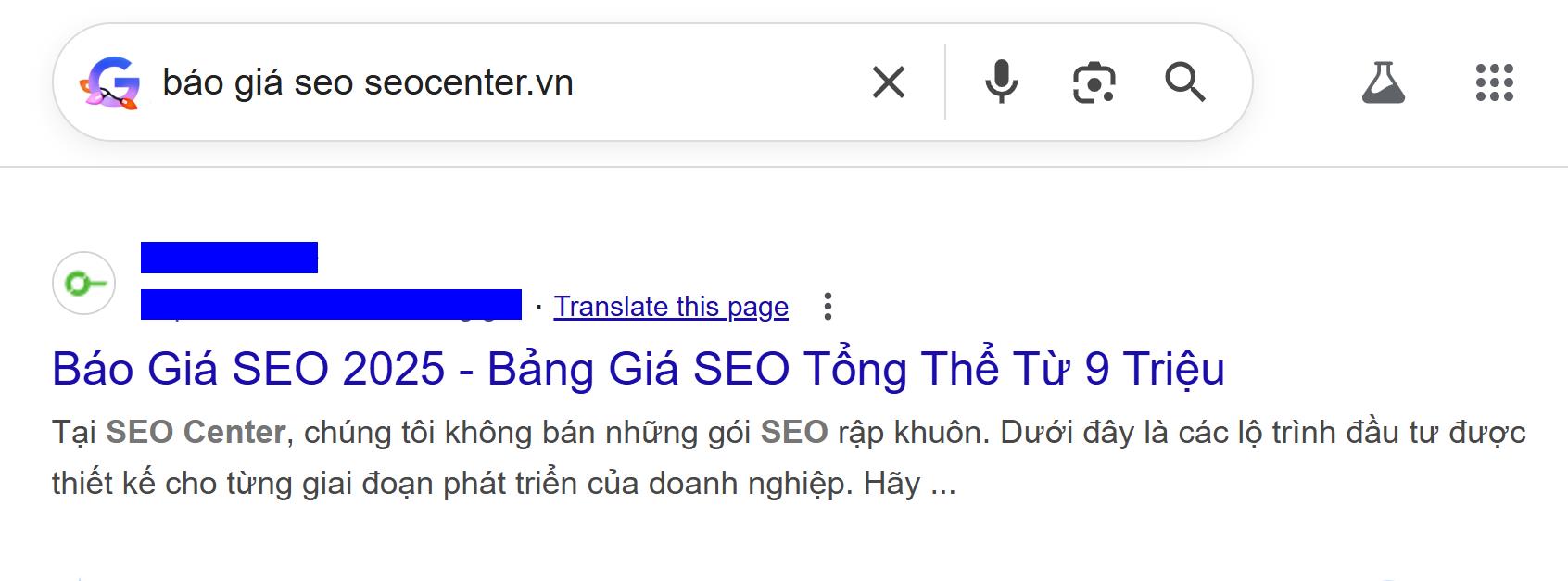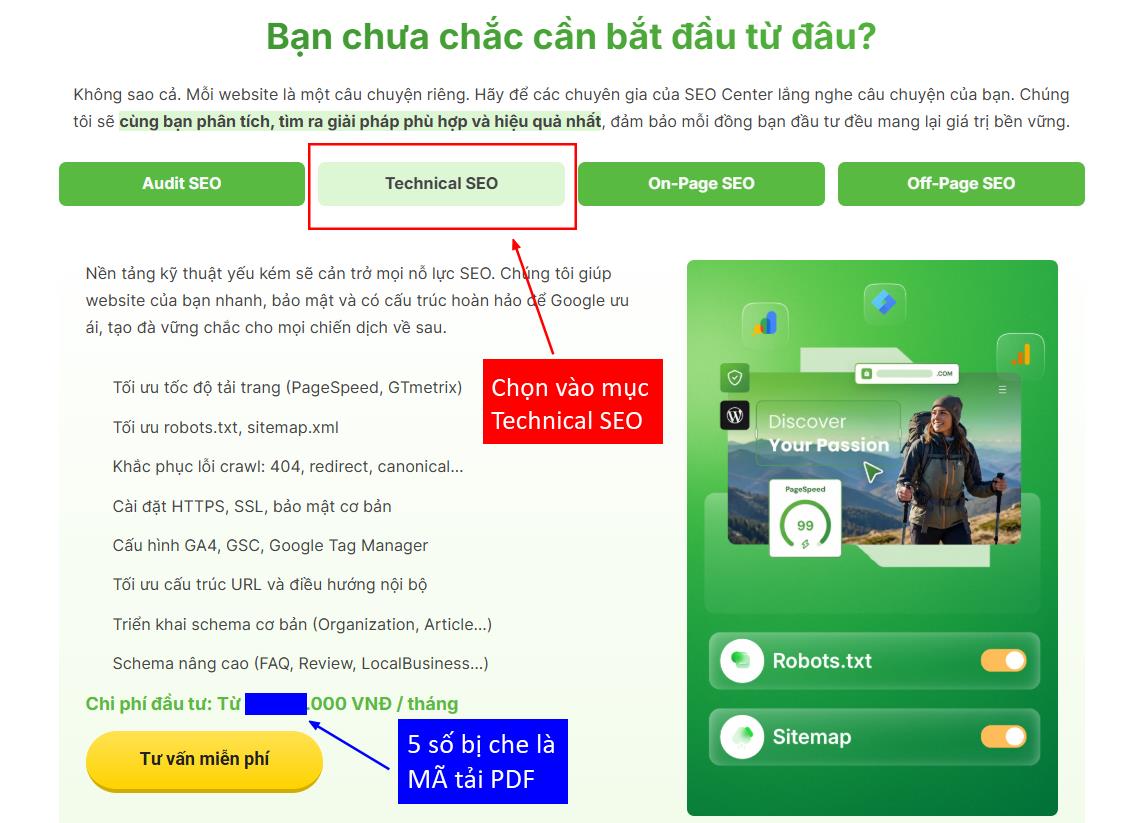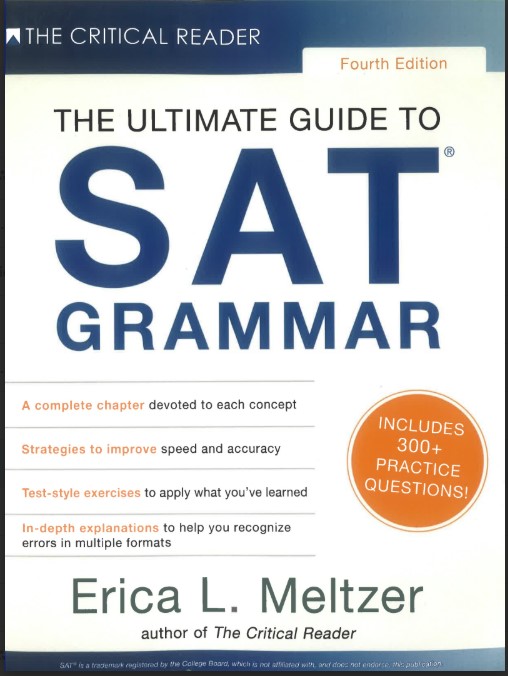
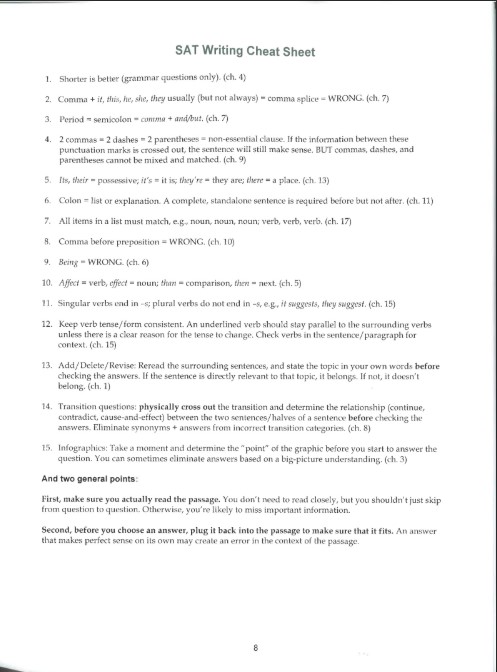
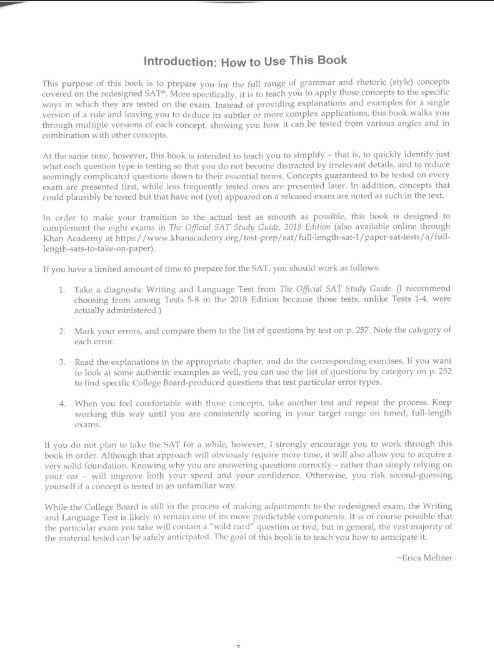
Bild 1 & 2: Table of Contents
Table of Contents
Introduction: How to Use This Book ……………………………………………. 7
SAT® Writing Cheat Sheet ………………………………………………………… 8
Parts of Speech ………………………………………………………………………. 9
Preliminary Exercise ………………………………………………………………. 12
- Is It Relevant? Adding, Deleting, and Revising ………………………. 16
- Sentence and Paragraph Order ………………………………………………. 31
- Infographics ……………………………………………………………………….. 40
- Shorter Is Better …………………………………………………………………. 53
- Diction, Idioms, and Register ……………………………………………….. 61
- Sentences and Fragments ……………………………………………………… 71
- Combining & Separating Sentences ………………………………………. 85
- Transitions ………………………………………………………………………….. 95
- Non-Essential & Essential Clauses ……………………………………….. 113
- Additional Comma Uses and Misuses ………………………………….. 134
- Colons and Dashes ……………………………………………………………. 139
- Question Marks ………………………………………………………………… 143
- Apostrophes: Plural vs. Possessive …………………………………… 144
- Pronoun and Noun Agreement ……………………………………………. 153
Cumulative Review: All Punctuation and Transitions ………………….. 163 - Verbs: Agreement and Tense ……………………………………………… 170
- Word Pairs and Comparisons ………………………………………………. 193
- Parallel Structure ………………………………………………………………. 200
- Dangling and Misplaced Modifiers ………………………………………. 210
- Relative Pronouns ……………………………………………………………… 218
Practice Test ………………………………………………………………………….. 225
Answer Key ……………………………………………………………………………. 239
Appendix A: Official Guide Questions by Category ………………………. 252
Appendix B: Official Guide Questions by Test ……………………………. 257
About the Author …………………………………………………………………….. 263
Bild 3: Introduction: How to Use This Book
Introduction: How to Use This Book
This purpose of this book is to prepare you for the full range of grammar and rhetoric (style) concepts covered on the redesigned SAT®. More specifically, it is to teach you to apply those concepts to the specific ways in which they are tested on the exam. Instead of providing explanations and examples for a single version of a rule and leaving you to deduce its subtler or more complex applications, this book walks you through multiple versions of each concept, showing you how it can be tested from various angles and in combination with other concepts.
At the same time, however, this book is intended to teach you to simplify—that is, to quickly identify just what each question type is testing so that you do not become distracted by irrelevant details, and to reduce seemingly complicated questions down to their essential terms. Concepts guaranteed to be tested on every exam are presented first, while less frequently tested ones are presented later. In addition, concepts that could plausibly be tested but that have not (yet) appeared on a released exam are noted as such in the text.
If you have a limited amount of time to take the exam, you should work as follows:
- Take a diagnostic Writing and Language Test from The Official SAT Study Guide. (I recommend choosing from among Tests 5-8 in the 2018 Edition because those tests, unlike tests 1-4, were actually administered.)
- Mark your errors, and compare them to the list of questions by test on p. 257. Note the category of each error.
- Read the explanations in the appropriate chapter, and do the corresponding exercises. If you want to look at some authentic examples as well, you can use the list of questions by category on p. 252 to find specific College Board-produced questions that test particular error types.
- When you find yourself comfortable with those concepts, take another test and repeat the process. Keep working this way until you are consistently scoring in your target range on timed, full-length exams.
If you do not plan to take the SAT for a while, however, I strongly encourage you to work through this book in order. Although that approach will obviously require more time, it will also allow you to acquire a very solid foundation. Knowing why you are answering questions correctly—rather than simply relying on your ear—will both improve your confidence and your proficiency. Otherwise, you risk second-guessing yourself if a concept is tested in an unfamiliar way.
While the College Board is still in the process of making adjustments to the redesigned exam, the Writing and Language Test is likely to remain one of its more predictable components. It is of course possible that the particular exam you take will contain a “wild card” question or two, but in general, the vast majority of the test material can be safely anticipated. The goal of this book is to teach you how to anticipate it.
(Erica Meltzer)
Bild 4: SAT Writing Cheat Sheet
SAT Writing Cheat Sheet
- Shorter is better (grammar questions only). (ch. 4)
- Comma + it, this, he, she, they (but not always) = comma splice = WRONG. (ch. 7)
- Period = semicolon = comma + and/but. (ch. 7)
- 2 commas = 2 dashes = 2 parentheses = non-essential clause. If the information between these punctuation marks is crossed out, the sentence will still make sense. BUT commas, dashes, and parentheses cannot be mixed and matched. (ch. 9)
- Its, their = possessive; it’s = it is; they’re = they are; there = a place. (ch. 13)
- Colon = list or explanation. A complete, standalone sentence is required before but not after. (ch. 11)
- All items in a list must match. e.g., noun, noun, noun; verb, verb, verb. (ch. 17)
- Comma before preposition = WRONG. (ch. 10)
- Being = WRONG. (ch. 6)
- Affect = verb, effect = noun; than = comparison, then = next. (ch. 5)
- Singular verbs end in –s; plural verbs do not end in –s, e.g., it suggests, they suggest. (ch. 15)
- Keep verb tense/form consistent. An underlined verb should stay parallel to the surrounding verbs unless there is a clear reason for the tense to change. Check verbs in the sentence/paragraph for context. (ch. 15)
- Add/Delete/Revise: Reread the surrounding sentences, and state the topic in your own words before checking the answers. If the sentence is directly relevant to that topic, it belongs. If not, it doesn’t belong. (ch. 1)
- Transition questions: physically cross out the transition and determine the relationship (continue, contradict, cause-and-effect) between the two sentences/halves of a sentence before checking the answers. Eliminate synonyms + answers from incorrect transition categories. (ch. 8)
- Infographics: Take a moment and determine the “point” of the graphic before you start to answer the question. You can sometimes eliminate answers based on a big-picture understanding. (ch. 3)
And two general points:
First, make sure you actually read the passage. You don’t need to read closely, but you shouldn’t just skip from question to question. Otherwise, you’re likely to miss important information.
Second, before you choose an answer, plug it back into the passage to make sure that it fits. An answer that makes perfect sense on its own may create an error in the context of the passage.
Bild 5: Parts of Speech
Parts of Speech
There are eight parts of speech in the English language, seven of which are directly relevant to the SAT. If you are not comfortable identifying them, you should begin by reviewing this section. Although portions of these definitions are repeated throughout the guide, familiarizing yourself with these terms before you begin will help you move through the explanations and exercises more easily.
The seven parts of speech tested on the SAT are as follows:
- Verb
Verbs indicate actions or states of being.Examples:
To be
To have
To seem
To go
To study
To believeThe “to” form of a verb is known as the infinitive. All of the verbs listed above are infinitives. If you are uncertain whether a word can be used as a verb, try placing to in front of it to form an infinitive.Verbs are not always used as infinitives. In order to indicate who is performing an action, we must conjugate the verb and provide its subject.To be and to have are the most common English verbs. As a result, they are tested frequently on the SAT. Because they are irregular, their conjugated forms are different from their infinitives. To be is also unique in that it is conjugated in both the present and past. To answer many verb questions accurately, you must be able to recognize and distinguish between these verbs’ singular and plural forms.Conjugation of to be, present:SingularPluralI amWe areYou areYou areIt, (s)he, one isThey areConjugation of to be, past:SingularPluralI wasWe wereYou wereYou wereIt, (s)he, one wasThey wereConjugation of to have, present and past:SingularPluralI haveWe haveYou haveYou haveIt, (s)he, one hasThey have

